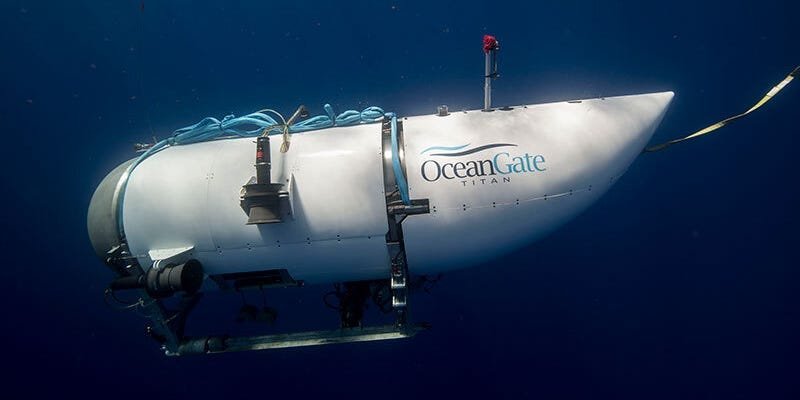US Coast Guard investigators found that a “toxic workplace culture” contributed in part to OceanGate’s Titan submersible disaster that left five people dead, including the deep-sea exploration company’s CEO.
The findings by the Coast Guard’s Marine Board of Investigation were laid out in a 335-page report released on Tuesday, more than two years after the June 18, 2023 incident.
Investigators said in the report that the implosion of the submersible during an expedition to the Titanic wreck site in the depths of the North Atlantic Ocean was “preventable.”
OceanGate CEO Stockton Rush — the creator behind the 22-foot Titan vessel — and four other passengers were killed in the catastrophe that set off a dayslong international search by land, air, and sea.
The Coast Guard board determined that the primary contributing factors to the disaster were OceanGate’s inadequate design, certification, maintenance, and inspection process for the Titan submersible.
Other factors that contributed to the tragedy included a “toxic workplace environment” at OceanGate, an inadequate domestic and international regulatory framework for submersible operations and vessels of novel design, as well as an ineffective whistleblower process, the Coast Guard board said in its report.
“We again offer our deepest condolences to the families of those who died on June 18, 2023, and to all those impacted by the tragedy,” an OceanGate spokesperson told Business Insider in a statement. “After the tragedy occurred, the company permanently wound down operations and directed its resources fully towards cooperating with the Coast Guard’s inquiry through its completion.”
Jason Neubauer, the Marine Board of Investigation chair, said in a statement that the Coast Guard’s probe “has identified multiple contributing factors that led to this tragedy, providing valuable lessons learned to prevent a future occurrence.”
“There is a need for stronger oversight and clear options for operators who are exploring new concepts outside of the existing regulatory framework,” Neubauer said.
OceanGate’s safety and operational practices were “critically flawed” and at the heart of those failures were “glaring disparities” between the company’s written safety protocols and its actual practices, Coast Guard investigators wrote in the report.
The report said that OceanGate’s “toxic workplace environment” used firings of senior staffers and the looming threat of being terminated “to dissuade employees and contractors from expressing safety concerns.”
Rush, who several employees told investigators essentially served as the company’s CEO, safety officer, and primary submersible pilot, often bypassed protocols and ignored the concerns of other experienced OceanGate employees and contractors, the report said.
“The cumulative effect was an authoritarian and toxic culture where safety was not only deprioritized but actively suppressed,” the report added. “This toxic environment, characterized by retaliation and belittling against those who expressed safety concerns combined with a lack of external oversight, set the stage for the TITAN’S ultimate demise.”
In the wake of the Titan implosion, reports emerged that a slew of industry experts had flagged warnings and safety concerns about the vessel and its carbon-fiber-based hull.
The sub also never underwent a certification process, despite prior calls from experts to do so.
The Titan, Coast Guard investigators said in the report, was “not registered, certified, inspected, or classed by any international flag administration or recognized organization.”
For years before the implosion that also killed explorer Paul-Henri Nargeolet, British billionaire Hamish Harding, British businessman Shahzada Dawood, and his son Suleman, OceanGate “leveraged intimidation tactics, allowances for scientific operations, and the company’s favorable reputation to evade regulatory scrutiny,” the report said.
It continued, “By strategically creating and exploiting regulatory confusion and oversight challenges, OceanGate was ultimately able to operate TITAN completely outside of the established deep-sea protocols, which had historically contributed to a strong safety record for commercial submersibles.”
Read the full article here

















